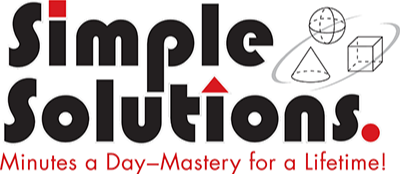Assessments and Learning
The “competitive incorrect answers” are related material, just not the correct answer. Thinking about them, though, strengthens what students know about those items.
In later assessment situations, when a new question is asked and a previous competitive alternative is now the correct answer, a student will be more likely to know why, and thus choose it. According to Dr. Bjork, this reflects enhanced learning.
Perhaps when creating your own multiple-choice questions, make sure that some distractors offer a competitive alternative. This will stimulate retrieval and enhance learning. Then spend time with students about why an answer isn’t right.
Here’s a math question from Simple Solutions Mathematics IA. (Grade 5) and reasons why the distractors are plausible, competitive choices.
Round 57,831,920 to the nearest ten million.
A) 57,800,000 B) 57,000,000
C) 58,000,000 D) 60,000,000
Why are the distracters plausible?
Choice A: Correctly rounded but to the nearest 100 thousand.
Choice B: This is a “round number,” but it is rounded down.
Choice C: Correctly rounded but to the nearest millions place.
This is a question from Simple Solutions NextGen Science Grade 3.
What causes the change of seasons on Earth?
A) During winter, Earth is farther from the sun than it is during summer.
B) As Earth revolves, the parts of Earth that receive the most intense sunlight change.
C) The tilt of Earth’s axis changes; the tilt is greater in summer and less in winter.
D) As Earth rotates on its axis, the part of Earth that faces the sun changes.
Why are the distracters plausible?
Choice A: This is a common misconception. The distance between Earth and the sun does change but not in a yearly cycle. This is not what causes the seasons.
Choice C: Another common misconception is that Earth tilts more or straightens more, depending on the time of year. This is not true.
Choice D: This is a true statement, but it explains day and night, not the change of seasons.
In future blogs, we’ll discuss other kinds of assessment questions, as well as the importance of interleaving, spacing, and metacognition.

